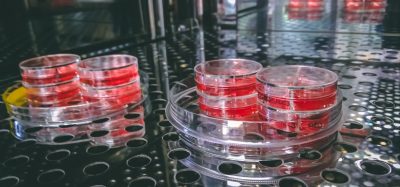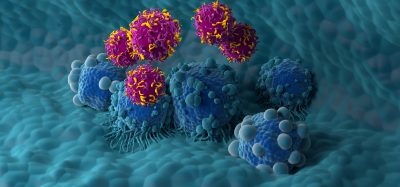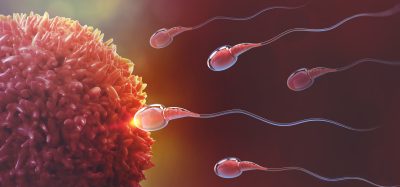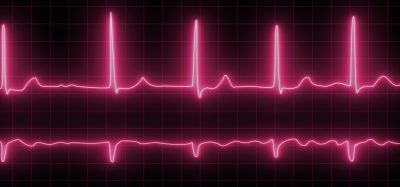Sanofi and Regeneron announce new, detailed data from positive sarilumab Phase 3 rheumatoid arthritis trial at EULAR
Posted: 12 June 2014 | Sanofi | No comments yet
Sanofi and Regeneron Pharmaceuticals, Inc. presented positive results from a phase 3 trial of investigational drug sarilumab in rheumatoid arthritis patients who were inadequate responders to methotrexate therapy…


Sanofi (EURONEXT: SAN and NYSE: SNY) and Regeneron Pharmaceuticals, Inc. (NASDAQ: REGN) today presented positive results from a phase 3 trial of investigational drug sarilumab in rheumatoid arthritis (RA) patients who were inadequate responders to methotrexate (MTX) therapy. New data presented at the meeting showed that sarilumab increased major clinical response rates defined as achieving an ACR70 for at least 24 consecutive weeks and showed sustained improvement in signs and symptoms of RA after 52 weeks, which were secondary endpoints of the trial.
As previously announced, in this study, called SARIL-RA-MOBILITY, sarilumab met all three coprimary endpoints, demonstrating improvement in disease signs and symptoms at 24 weeks, physical function at 16 weeks and inhibition of joint damage progression at 52 weeks. These data will be presented today at the European League Against Rheumatism Annual Congress (EULAR 2014) Congress in Paris, France.
“Despite notable advances, many RA patients continue to struggle with debilitating signs and symptoms, underscoring a clear need for additional options,” said Dr. Mark Genovese, Professor, Stanford University Medical Center and lead investigator in the study. “Sarilumab showed efficacy in this study at two different doses, both delivered subcutaneously every other week. We look forward to the results of ongoing trials in this comprehensive registration program.”
The SARIL-RA-MOBILITY Phase 3 trial enrolled 1,197 adult patients with active, moderate-tosevere rheumatoid arthritis, who were inadequate responders to MTX therapy. Patients were randomized to one of three treatment groups dosed subcutaneously every other week, sarilumab 150 milligrams (mg), sarilumab 200 mg, or placebo, all in combination with MTX.
Both sarilumab groups showed statistically significant improvements compared to the placebo group in all three co-primary endpoints (p < 0.0001).
- Improvement in signs and symptoms of RA at 24 weeks, as measured by the American College of Rheumatology score of 20 percent improvement (ACR20). These results were 58 percent, 66 percent, and 33 percent in the sarilumab 150 mg, sarilumab 200 mg, and placebo groups respectively, all in combination with MTX.
- Improvement in physical function at Week 16 as measured by Health Assessment Questionnaire – Disability Index (HAQ-DI). Newly presented HAQ-DI results were -0.53, – 0.55, and -0.29 in the sarilumab 150 mg, sarilumab 200 mg, and placebo groups respectively, all in combination with MTX.
- Inhibition of progression of structural damage at Week 52, as measured by change in the van der Heijde modified total Sharp score (mTSS). These results were 0.90, 0.25, and 2.78 in the sarilumab 150 mg, sarilumab 200 mg, and placebo groups respectively, all in 2/4 combination with MTX. The group receiving the 200 mg dose of sarilumab + MTX had a reduction of approximately 90 percent in the radiographic progression assessed by the mTSS compared to the radiographic progression with placebo + MTX at week 52.
Also newly presented, both sarilumab groups also showed improvement on the major clinical response secondary endpoint:
- Sarilumab combined with MTX demonstrated statistically significantly greater effect than MTX alone in achieving a major clinical response, defined as reducing signs and symptoms of RA by 70% or more, as measured by improvement of the American College of Rheumatology score (ACR70 response), for at least 24 consecutive weeks. These results were 13 percent, 15 percent and 3 percent in the sarilumab 150 mg, sarilumab 200 mg, and placebo groups, respectively (p<0.0001).
Both doses also demonstrated a sustained response in improvement of signs and symptoms of RA compared to placebo at 52 weeks as measured by the ACR20 response. These results were 54 percent, 59 percent, and 32 percent in the sarilumab 150 mg, sarilumab 200 mg, and placebo groups, respectively.
In the SARIL-RA-MOBILITY trial, there was a higher incidence of treatment-emergent adverse events leading to withdrawal in the sarilumab treatment groups compared to placebo (12.5 percent in 150 mg, 13.9 percent in 200 mg and 4.7 percent in placebo). Infections were the most frequently reported adverse events and were reported with a higher incidence in the sarilumab groups compared to placebo, all in combination with MTX (40.1 percent for 150 mg, 39.6 percent for the 200 mg group and 31.1 percent for placebo). The incidence of serious infections was 2.6 percent in the 150 mg + MTX group, 4.0 percent in the 200 mg + MTX group, and 2.3 percent in the placebo + MTX group.
Among patients treated with sarilumab, a dose-dependent decrease in mean neutrophil counts was observed. Serious infections were not associated with grades 3 and 4 neutropenia in this study. Increases in mean LDL cholesterol, and transaminases were observed. These safety findings were consistent with those observed in prior investigational studies with sarilumab.
The sarilumab Phase 3 program, known as SARIL-RA, has six ongoing clinical studies and is targeted to enroll approximately 2,800 RA patients.








